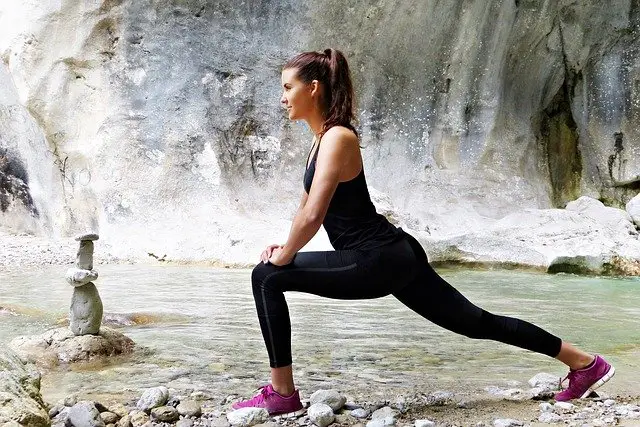How to Fix Tight Hip Flexors
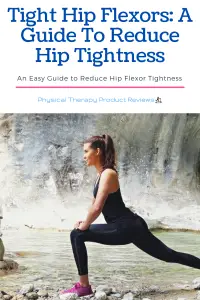 From posture to mood disorders to obesity, the causes of low back pain are often unclear and the diagnosis is usually ambiguous. What is clear, however, is that low back pain is one of the most common health problems around the world, and is one of the major causes of disability worldwide.1 Not only is this harmful for the patient themself, but the prevalence imposes an emotional and economic burden on families, communities, industry, and government.1 Hip pain is often experienced in parallel with low back pain, and this is thought to be due to anatomical proximity of the hip and lower-back region.2 Therefore, experts have suggested that addressing hip pain and hip flexor tightness will not only improve hip mobility but, in turn, minimize low back pain as well.3,4
From posture to mood disorders to obesity, the causes of low back pain are often unclear and the diagnosis is usually ambiguous. What is clear, however, is that low back pain is one of the most common health problems around the world, and is one of the major causes of disability worldwide.1 Not only is this harmful for the patient themself, but the prevalence imposes an emotional and economic burden on families, communities, industry, and government.1 Hip pain is often experienced in parallel with low back pain, and this is thought to be due to anatomical proximity of the hip and lower-back region.2 Therefore, experts have suggested that addressing hip pain and hip flexor tightness will not only improve hip mobility but, in turn, minimize low back pain as well.3,4
What are the Hip Flexors?
The “Hip Flexors” are a set of muscles around the hip that help to balance the pelvis and allow us to perform everyday functional activities, like running, standing, and lifting the leg.5 There are several key muscles that make up our hip flexors, and, unfortunately, these are also usually the culprit for much of the pain we may experience in our hips. These muscles include:
- Iliacus
- Psoas Major
- Rectus Femoris
- Sartorius
- and the Tensor Fascia Latae (TFL)5
Although they originate as separate entities, the Iliacus and psoas major are often referred to as the Iliopsoas since they converge into one distinct structure at the femur. Together, they are the largest of the hip flexor muscles and contribute to the natural curvature of our spine.5 The Rectus Femoris is a long, bulky muscle located in the anterior thigh and functions both in hip flexion and leg extension.5 The Sartorius, on the other hand, is a thin strip of muscle that begins at the pelvis and extends all the way down the inner thigh, making it the longest muscle in the human body.6 You may have heard the Sartorius fondly referred to as the “honeymoon muscle,” since it functions to abduct and laterally rotate the hip.7 Finally, the TFL muscle sits on the outer portion of the hip, sandwiched between the Iliotibial (IT) band, and is best known clinically for its stabilization of the pelvis when standing or walking.8
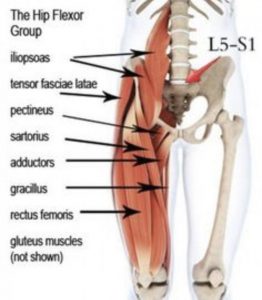
Causes of Tight Hip Flexors
Now that we know what exactly makes up our hip flexors, it is important to understand why these muscles become tight and, importantly, why this can cause us so much discomfort. “Tightness” results when a muscle becomes shortened over time, leading to increased muscular tension.9 With this in mind, we can say that muscle length and tension are inversely related – as muscle length decreases, muscle tension increases. This is why focusing on elongating a muscle (aka stretching), is often used to improve muscle tension.9 With this in mind, anything that causes chronic shortening of our hip muscles may lead to excessive tension and, thus, tight hip flexors.
There are several causes that result in hip flexor tightness, the most common of which being something that many of us do on a daily basis: sitting.5 To be exact, sitting for extended periods of time causes postural adaptation, which leads to shortening of the iliopsoas.9 Alternatively, our hip flexors may also shorten (and thus, tighten) due to spasms or contractions that develop in the muscle.9 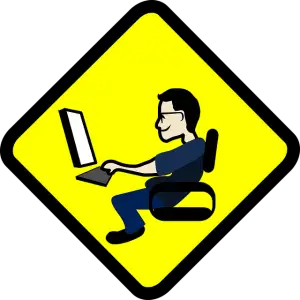
Furthermore, some athletes may be more prone to hip tightness due to the nature of their sport. Runners are especially at risk since they use the hip flexors to lift the leg (and shorten the muscles) with each stride.10 Because the hip muscles are inextricably linked to our Gluteus Maximus and abdominal muscles, weakness in either of these other muscle groups may increase reliance on the hip flexor muscles and cause further tightness.11 Regardless of the cause, hip tightness limits the range of motion and can eventually result in muscle/postural imbalances.9
How Tight Hip Flexors Can Affect Posture
As mentioned previously, the hip flexors function closely with our abdominal muscles and gluteus maximus, all of which are key components in maintaining postural control.11 When our hip flexors shorten and tighten, the muscles pull the pelvis and lower spine forward. The result is what’s called an “anterior pelvic tilt”, where the lower back arches and the butt sticks out – an obvious sign of weak abdominal muscles and/or tight hip flexors.5, 11
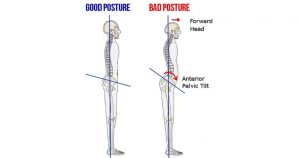
Similar to the relationship between the biceps and triceps, the hip flexors and the glutes have an antagonistic relationship. This means that over-activity (tightness) of the hip flexors leads to inhibition, or turning off, of the gluteus maximus. This inactivation leads to further muscle imbalances that affect our posture.11
How to Test for Hip Flexor Tightness
By understanding this relationship between the hip flexors and hip extensors (glutes), you can individually test your own hip flexors for tightness. To do so, follow these instructions:
- Sit right near the edge of a table/bed/bench, with your legs dangling over the edge
- Grab one knee and pull in towards your chest
- Roll back so you back is against the bench
- Allow your extended knee to come up as well
- Keep low back flat on the table
- Slowly drop your extended leg over the edge
- See how far you can lower your knee over the edge, past the horizontal plane
- The ability to lower this knee past the horizontal plane indicates good hip flexibility
How to Improve Hip Flexor Tightness
Now that we know what the hips flexors are, how they work, and why they become tight, you might be wondering how you can improve their flexibility and decrease tightness. While stretching can certainly be an initial starting point, stretching alone is not the most effective way to improve your hip mobility. The reason for this goes back to the relationship between the hips, glutes, and abdominal muscles. The hip flexors are responsible for different types of movement through different spatial planes, and they are dependent on muscles from the glutes and abdominals (Muscle stretching).
To successfully minimize hip flexor tightness, we must take a multi-dimensional approach to treatment/prevention, which includes stretching, strength training, and core exercises.
One of our favorite health accessories to use for hip flexor tightness is the foam roller. We use it to help with decreasing muscle tightness and as an aid for strengthening the posterior hip. To find a quality foam roller, see our reviews of the best foam rollers here.
Foam Roller Exercises for Tight Hip Flexors
Prone on Hip Flexors
- Goal: relax the hip flexor muscles to reduce their tightness
- Instructions:
Focus on one leg at a time
- Place the foam roller on the ground, then lie on top of it so that the foam roller is located the top of your Quadricep
- In short, small movements, roll up and down the top of the quad
- Then begin rocking side to side
- Use your body weight to loosen the muscles
Figure 4 on Foam Roller
- Goal: Target and activate your glutes, which will, in turn, increase your hip flexibility and allow for a better range of motion
- Instructions:
- Place the foam roller on the ground and then carefully sit on it
- While balancing on the foam roller, cross one ankle over the opposite knee
- Support yourself with your hand and the foot that is planted on the ground
- Roll slowly up and down over your glutes
- Continue 30-60 each side
Stretches for Tight Hip Flexors
Kneeling Hip Flexor Stretch
- Goal: stretch and elongate the hip flexors while being careful not to overextend the stretching of the muscles
- Instructions:
- Begin in a half-kneeling position
- Start with your left knee on the ground, which should be aligned with your hip and shoulders
- Right knee is in front of you, aligned with your toes to create a 90-degree angle
- Rock back and forth into an anterior and posterior pelvic tilt position
- Maintain the kneeling position, but slightly arch your back outwards and squeeze your glutes by pulling them inwards
- Then slowly move to an anterior tilt position by pulling chest forward, arching your back forwards, and pushing your hips back
- Then stand tall, maintain a slight posterior tilt position while holding the stretch
- Maintain glute and abdominal contraction throughout
- Feel the stretch in your anterior thigh
- Begin in a half-kneeling position
Standing Hip Flexor Stretch
- Goal: Elongate and stretch the psoas muscle
- Instructions:
- Begin by standing tall and upright
- Then move one leg forward to assume a half lunge position
- Your opposite leg should stay behind you
- Hold and maintain the stretch
Core Strengthening Exercises to Help with Tight Hip Flexors
Dead Bugs with a Foam Roller
-
- Goal: To keep your spine straight with your stomach as tight and contracted as possible while you move your distal extremities.
- Instructions:
- Begin by lying with your back on the ground
- Reach your arms towards the ceiling and lift both legs off the ground so the shins are parallel to the ground
- Place a foam roller between your forearms and knees
- Extend one leg outward so it is parallel to the ground
- Maintain pressure with one knee and your forearms to keep the foam roller still
- Return the extended knee to 90-degree position and repeat with the other leg
- Keep your core tight and back flat on the ground
Plank Rolls on the Foam Roller
- Goal: To keep your spine straight with your stomach as tight and contracted as possible while you move your distal extremities.
- Instructions:
- Begin by lying with your back on the ground
- Reach your arms towards the ceiling and lift both legs off the ground so the shins are parallel to the ground
- Place a foam roller between your forearms and knees
- Extend one leg outward so it is parallel to the ground
- Maintain pressure with one knee and your forearms to keep the foam roller still
- Return the extended knee to 90-degree position and repeat with the other leg
- Keep your core tight and back flat on the ground
- Instructions:
Hip Strengthening Exercises For Tight Hip Flexors
Single-Leg Bridge
- Goal: To the spine straight with your stomach as tight and contracted as tight possible while you lift your hips from the floor towards the ceiling using one leg.
- Instructions:
- Begin by lying with your back on the ground
- Tighten your tummy, and lift one leg into the air out in front of you.
- Squeeze your glute on your down leg and lift your hips towards the ceiling
- Try to keep your pelvis level and prevent it from rotating
- Hold for a few seconds and return to back to the floor
- Place a foam roller under the down foot to make it hard and more unstable
- Keep your core tight and back straight during the whole exercise
- Instructions:
Weighted Step Up
- Goal: To step up onto a high bench or stair while driving your body up using your glute muscles.
Instructions:
- Begin by standing in front of a bench, stair, or something 6-24″ tall.
- Tighten your tummy, and lift one leg onto the raised surface.
- Squeeze your glute on your up leg and lift your body up towards the ceiling
- Try to keep your pelvis level and prevent it from rotating
- Don’t push off or vault from the down leg
- You will more than likely need to add a dumbbell or an adjustable kettlebell to add resistance
- Keep your core tight and back straight during the whole exercise
- Try to do as many as you can in 30 seconds bouts
Conclusion:
Because of the critical function that the hip flexors play in our daily movements, there is a lot of weight riding on these muscles (literally and figuratively). Understanding how and why hip tightness originates can help you to proactively and safely begin treating the pain. By approaching treatment with diligence and consistency, your hips will be sure to thank you in the long run.
Works Referenced:
- (2013). 6. Priority diseases and reasons for inclusion.
- Harris-Hayes, M., Sahrmann, S.A., and Van Dillen, L.R. (2009). Relationship between the hip and low back pain in athletes who participate in rotation-related sports. Journal of Sport Rehabilitation 18, 60–75.
- Lee, S.W., and Kim, S.Y. (2015). Effects of hip exercises for chronic low-back pain patients with lumbar instability. Journal of Physical Therapy Science 27, 345–348.
- Nadler, S.F., Wu, K.D., Galski, T., and Feinberg, J.H. (1998). Low back pain in college athletes: A prospective study correlating lower extremity overuse or acquired ligamentous laxity with low back pain. Spine 23, 828–833.
- (2013). Hips and Thighs. In Deep Tissue Massage Treatment, (Elsevier), pp. 134–157.
- Harris, A.J., Duxson, M.J., Butler, J.E., Hodges, P.W., Taylor, J.L., and Gandevia, S.C. (2005). Muscle fiber and motor unit behavior in the longest human skeletal muscle. Journal of Neuroscience 25, 8528–8533.
- Gerhardt B., M.B., Logishetty, K., Meftah, M., and Ranawat S., A.S. (2011). Arthroscopic and Open Anatomy of the Hip. In Techniques in Hip Arthroscopy and Joint Preservation Surgery With Expert Consult Access, (Elsevier Inc.), pp. 9–22.
- Trammell, A.P., and Pilson, H. (2019). Anatomy, Bony Pelvis, and Lower Limb, Tensor Fasciae Latae Muscle (StatPearls Publishing).
- Page, P. (2012). Current concepts in muscle stretching for exercise and rehabilitation. International Journal of Sports Physical Therapy 7, 109–119.
- Mansfield, P.J., and Neumann, D.A. (2019). Structure and Function of the Hip. In Essentials of Kinesiology for the Physical Therapist Assistant, (Elsevier), pp. 233–277.
- Buckthorpe, M., Stride, M., and Villa, F. Della (2019). ASSESSING AND TREATING GLUTEUS MAXIMUS WEAKNESS – A CLINICAL COMMENTARY. International Journal of Sports Physical Therapy 14, 655–669.
Disclaimer: The information provided in this post is for educational purposes only. This is not a substitute for a medical appointment. Please refer to your physician before starting any exercise program.
